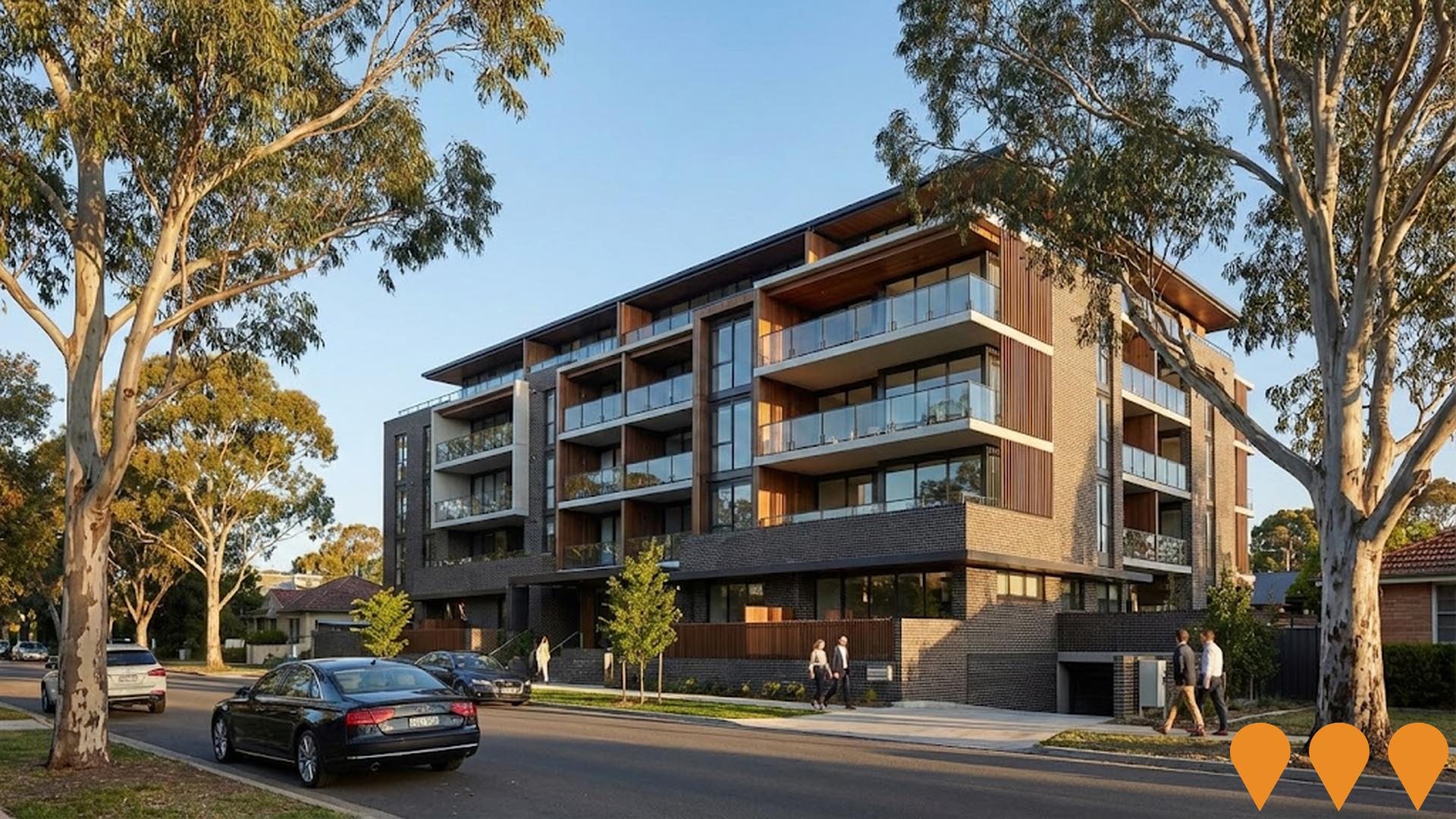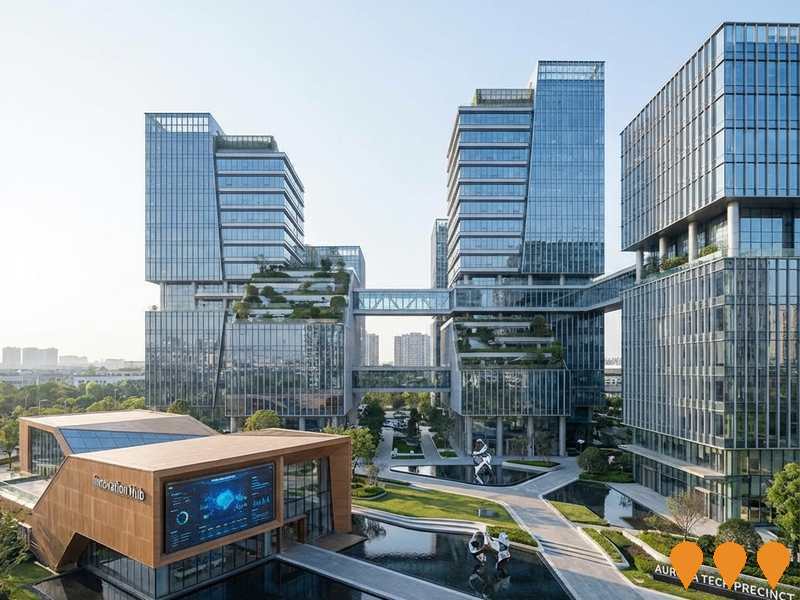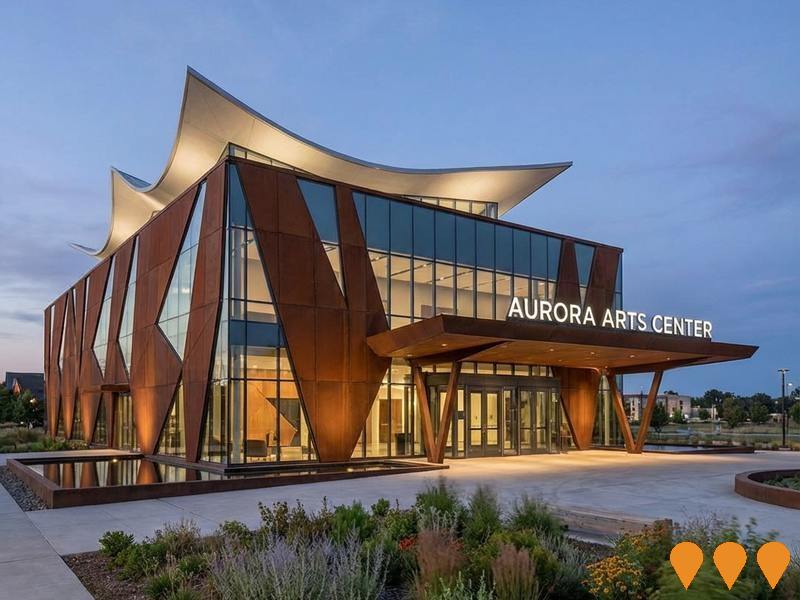Chart Color Schemes
est. as @ -- *
ABS ERP | -- people | --
2021 Census | -- people
Sales Activity
Curious about local property values? Filter the chart to assess the volume and appreciation (including resales) trends and regional comparisons, or scroll to the map below view this information at an individual property level.
Find a Recent Sale
Sales Detail
Population
Barton lies within the top quartile of areas nationally for population growth performance according to AreaSearch analysis of recent, and medium to long-term trends
Barton's population was 1,988 as of August 2025. This figure is an increase of 42 people since the 2021 Census, which reported a population of 1,946. The change is inferred from the estimated resident population of 1,996 in June 2024 and address validation since the Census date. The population density ratio was 1,670 persons per square kilometer, above the national average assessed by AreaSearch. Over the past decade, Barton's compound annual growth rate was 3.5%, outpacing its SA3 area. Overseas migration contributed approximately 82.6% of overall population gains during recent periods.
AreaSearch adopted ABS/Geoscience Australia projections for each SA2 area, released in 2024 with a base year of 2022. For areas not covered and years post-2032, age group growth rates from the ACT Government's SA2 area projections were used, also based on 2022. By 2041, Barton's population is projected to increase by approximately 126 persons, representing a total gain of 6.7% over the 17-year period.
Frequently Asked Questions - Population
Development
Residential development activity is lower than average in Barton according to AreaSearch's national comparison of local real estate markets
Barton has seen minimal dwelling approvals in recent years. Only 1 home was approved between FY-2021 and FY-2025, with none approved so far in FY-2026. Over these past five financial years, an average of 203 new residents arrived per year for each dwelling constructed.
This significant demand outpaces the supply of new homes, typically leading to price growth and increased buyer competition. The average construction cost value of new homes was $107,000, which is below regional levels, suggesting more affordable housing options for buyers. In FY-2026, $86.3 million in commercial approvals have been registered, indicating high local commercial activity. Compared to the Australian Capital Territory, Barton has notably lower building activity, which usually reinforces demand and pricing for existing dwellings due to constrained new construction. However, development activity has recently increased, suggesting potential changes or easing of planning limitations. This recent uptick remains below the national average, reflecting the area's established nature.
Frequently Asked Questions - Development
Infrastructure
Barton has moderate levels of nearby infrastructure activity, ranking in the top 50% nationally
Changes to local infrastructure significantly influence an area's performance. AreaSearch has identified six projects likely impacting the area. Notable ones are National Security Office Precinct (York Park), Kingston Arts Precinct, Cromwell Office Building Development, and Greenway Rise - The Establishment.
Professional plan users can use the search below to filter and access additional projects.
INFRASTRUCTURE SEARCH
 Denotes AI-based impression for illustrative purposes only, not to be taken as definitive under any circumstances. Please follow links and conduct other investigations from the project's source for actual imagery. Developers and project owners wishing us to use original imagery please Contact Us and we will do so.
Denotes AI-based impression for illustrative purposes only, not to be taken as definitive under any circumstances. Please follow links and conduct other investigations from the project's source for actual imagery. Developers and project owners wishing us to use original imagery please Contact Us and we will do so.
Frequently Asked Questions - Infrastructure
Canberra Hospital Master Plan
Long-term transformation of Canberra Hospital campus (2021-2041). The new Critical Services Building (Building 5) opened in 2023. Multiple stages are now in construction or detailed planning, including SPIRE Stage 1 (new emergency, surgical and intensive care facilities) and ongoing campus renewal works to deliver modern clinical facilities.

Kingston Arts Precinct
New $36 million performing and visual arts hub including a 250-seat theatre, gallery, rehearsal spaces and artist studios within the historic Fitters Workshop and former Transport Depot.
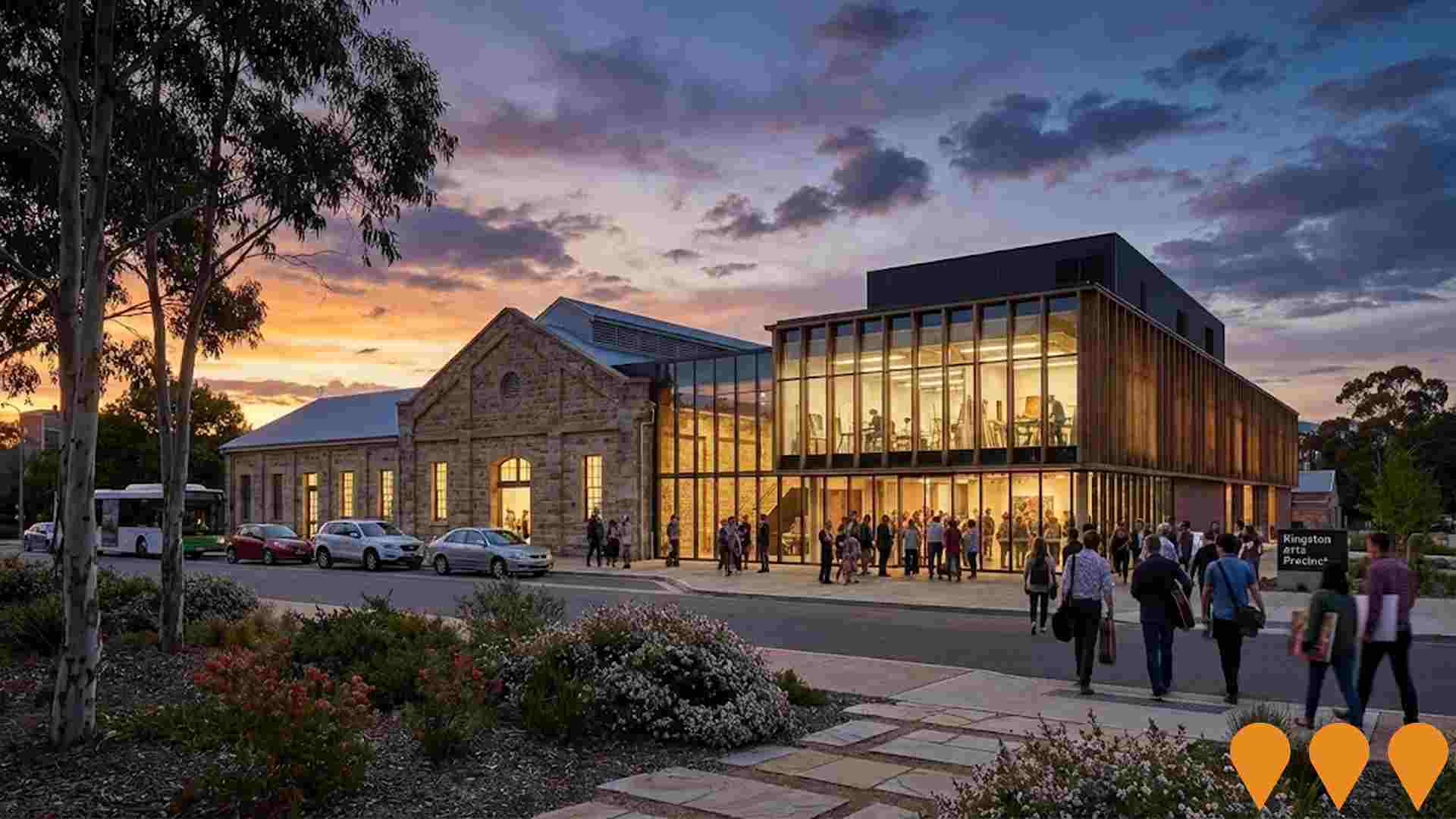
Kingston Foreshore Precinct
Award-winning mixed-use waterfront precinct featuring premium apartments, restaurants, bars, retail, public art and parklands along the southern shore of Lake Burley Griffin.
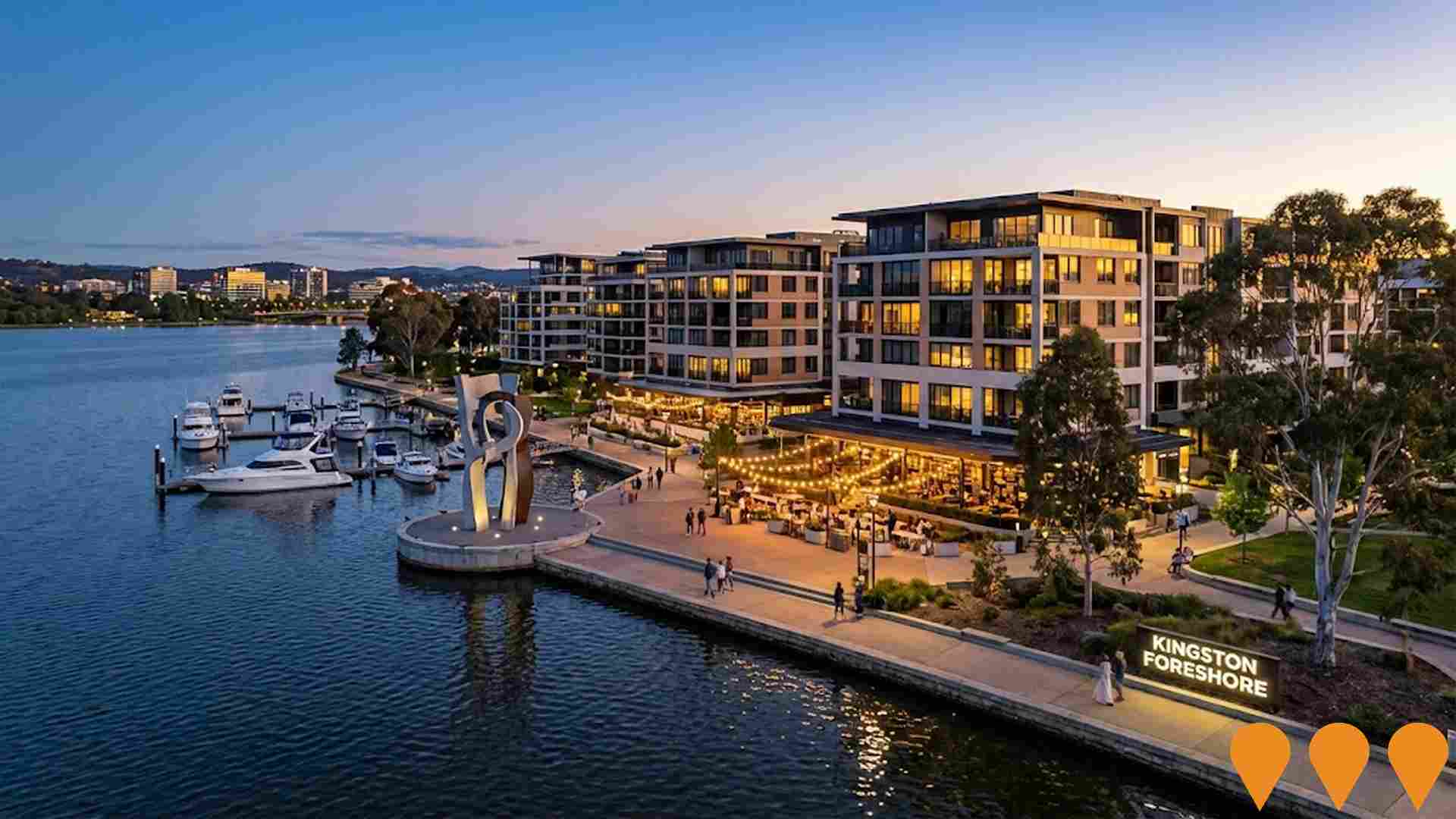
National Security Office Precinct (York Park)
A multi-agency office precinct at York Park in Barton to accommodate up to 5,000 workers from several national security and other Commonwealth agencies, with hospitality and retail amenities. Early site works commenced in late 2024 and the York Park car parks closed on 12 Feb 2025. Main construction is underway, led by Lendlease as Managing Contractor. Practical completion is targeted for late 2028 with occupation from 2029.

Enhanced bus and light rail corridors (Belconnen & Queanbeyan to Central Canberra)
ACT is progressing an integrated program to enhance high-frequency bus and future light rail corridors that link Belconnen and Queanbeyan with central Canberra. Light Rail Stage 2A (City to Commonwealth Park) commenced construction in early 2025 with services targeted from 2028, while planning and approvals continue for Stage 2B to Woden. The ACT Government has acknowledged and is planning upgrades for the Belconnen-to-City bus corridor as groundwork for a future east-west light rail Stage 3, and is coordinating cross-border public transport initiatives with NSW through the Queanbeyan Region Integrated Transport Plan and the ACT-NSW MoU for Regional Collaboration.
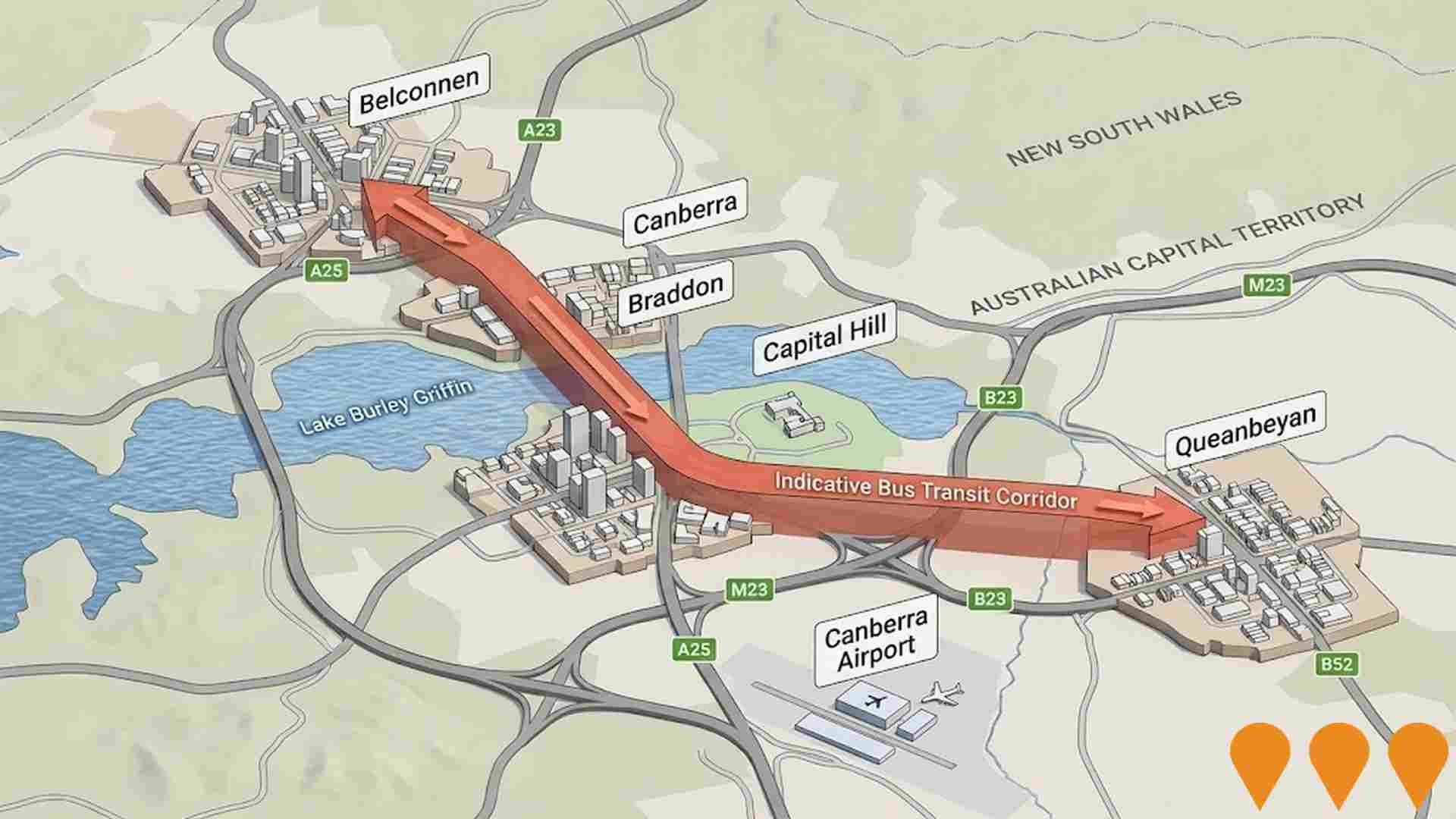
Queanbeyan Regional Integrated Transport Plan
Comprehensive transport planning initiative with 64 key actions for next 10 years. Addresses road safety, active transport connectivity, public transport availability, and future transport needs. Improved connections between Queanbeyan and ACT.
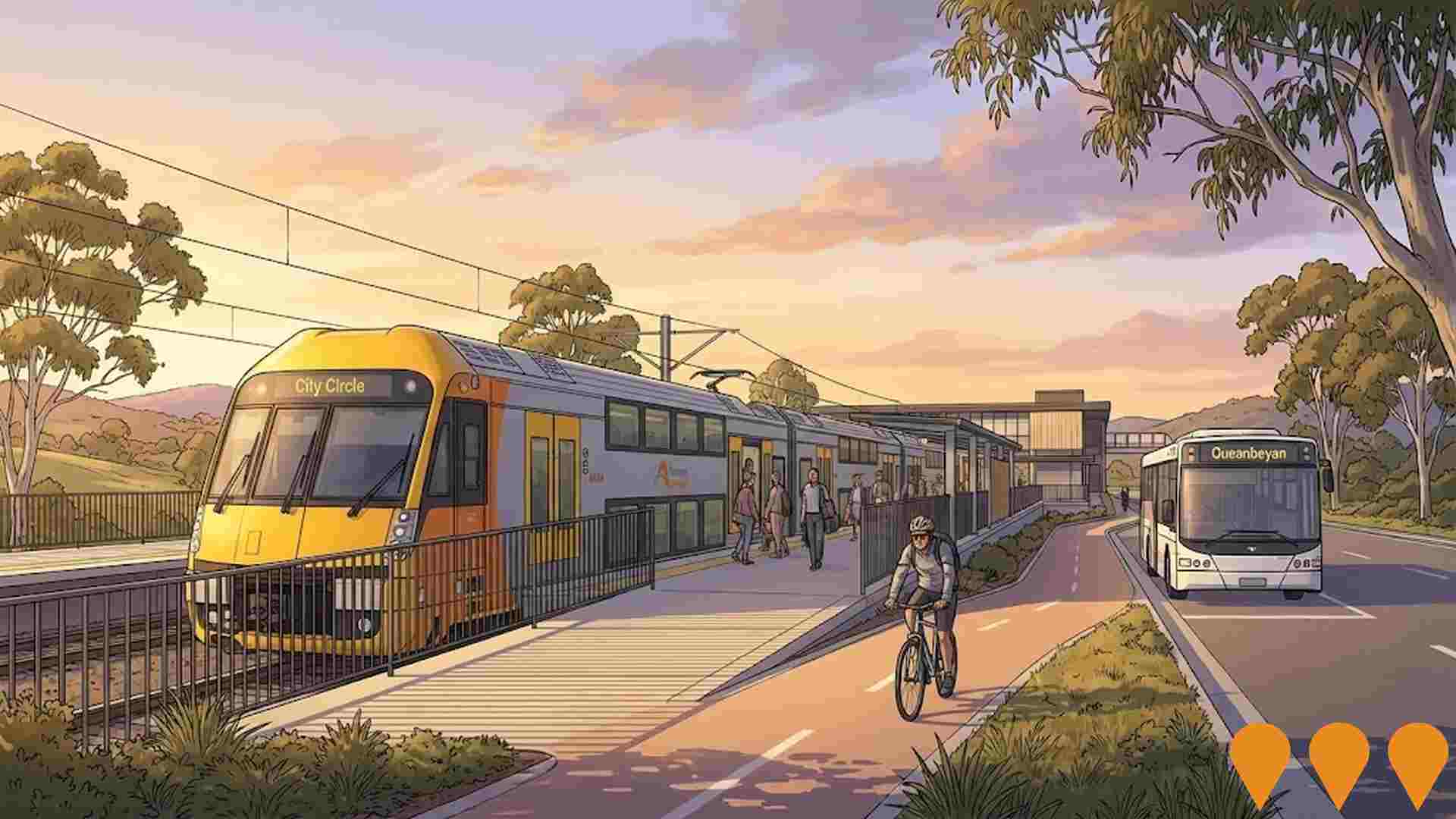
Greenway Rise - The Establishment
Luxury boutique residential development of 48 apartments in the heart of Kingston, designed by Fender Katsalidis with interiors by Ministry of Interior Architecture.
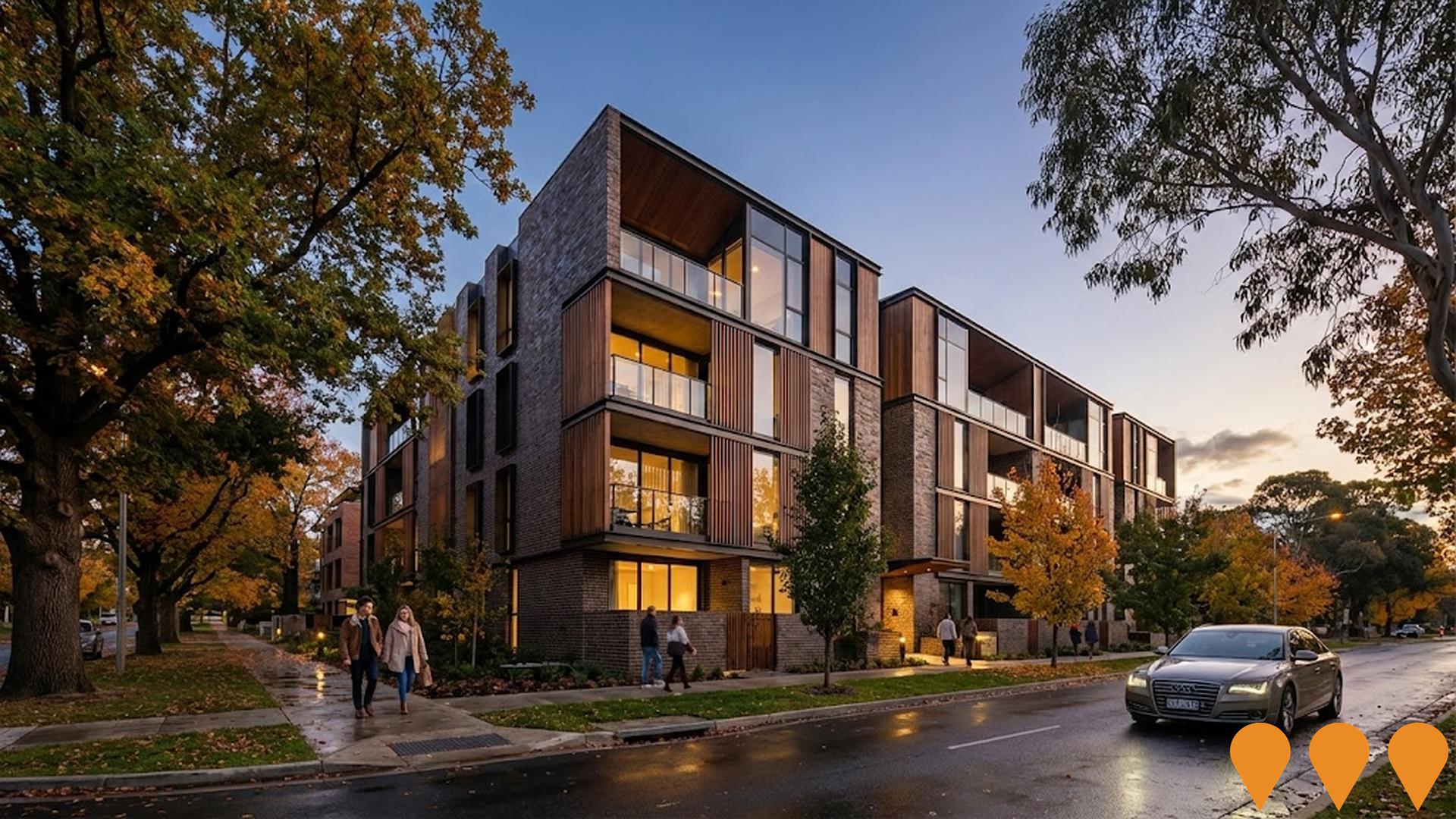
Deakin Private Hospital
Deakin Private Hospital offers premium and integrated inpatient, day therapy, and hospital-in-the-home services, focusing on individualised and high-quality mental health treatment. It includes a Specialised PTSD & Trauma Support Unit for military and first responders, and services such as Repetitive Transcranial Magnetic Stimulation (rTMS) for depression. The hospital also features co-located clinics and is supported by a multidisciplinary team of Psychiatrists, Medical, Nursing, and Allied Health professionals.

Employment
Employment conditions in Barton rank among the top 10% of areas assessed nationally
Barton's workforce is highly educated with strong representation in professional services. Its unemployment rate was 0.3% as of June 2025.
Employment growth over the past year was estimated at 1.5%. As of June 2025, 1,496 residents were employed while the unemployment rate was 3.1% lower than the Australian Capital Territory's (ACT) rate of 3.4%. Workforce participation was on par with ACT's 69.6%. Employment was concentrated in public administration & safety, professional & technical services, and education & training sectors.
Barton had a particularly strong specialization in public administration & safety, employing 1.8 times the regional level. In contrast, health care & social assistance employed only 6.3% of local workers, below ACT's 11.7%. With 7.3 workers per resident as at the Census, Barton functioned as an employment hub hosting more jobs than residents and attracting workers from surrounding areas. Over the 12 months to June 2025, employment increased by 1.5% while labour force increased by 1.6%, resulting in a slight rise in unemployment of 0.1 percentage points. In comparison, ACT recorded employment growth of 1.9%, labour force growth of 1.6%, with unemployment falling by 0.3 percentage points. Jobs and Skills Australia's national employment forecasts from May 2025 suggest that national employment is forecast to expand by 6.6% over five years and 13.7% over ten years, with significant variations between industry sectors. Applying these projections to Barton's employment mix suggests local growth of approximately 6.2% over five years and 12.6% over ten years.
Frequently Asked Questions - Employment
Income
The economic profile demonstrates exceptional strength, placing the area among the top 10% nationally based on comprehensive AreaSearch income analysis
Barton's median income among taxpayers was $93,344 in financial year 2022. The average income stood at $142,673 during the same period. These figures are higher than those for the Australian Capital Territory, which were $68,678 and $83,634 respectively. By September 2025, based on a 13.6% growth in wages since financial year 2022, median income is estimated to be approximately $106,039 and average income around $162,077. Census data shows that incomes in Barton rank highly nationally, between the 90th and 99th percentiles for households, families, and individuals. Income brackets indicate that 41.5% of Barton's population falls within the $1,500 - $2,999 income range, which is similar to the broader area where this cohort represents 34.3%. The locality demonstrates considerable affluence with 43.0% earning over $3,000 per week. This supports premium retail and service offerings in the area. High housing costs consume 15.9% of income, but strong earnings still place disposable income at the 89th percentile nationally. The area's SEIFA income ranking places it in the 10th decile.
Frequently Asked Questions - Income
Housing
Barton features a more urban dwelling mix with significant apartment living, with a higher proportion of rental properties than the broader region
The dwelling structure in Barton, as per the latest Census, consisted of 6.2% houses and 93.8% other dwellings (semi-detached, apartments, 'other' dwellings), compared to Australian Capital Territory's 40.7% houses and 59.3% other dwellings. Home ownership in Barton was at 22.3%, with mortgaged dwellings at 28.8% and rented ones at 48.9%. The median monthly mortgage repayment was $2,015, below the Australian Capital Territory average of $2,275. The median weekly rent was $525, compared to Australian Capital Territory's $500. Nationally, Barton's mortgage repayments were higher than the Australian average of $1,863, and rents were substantially above the national figure of $375.
Frequently Asked Questions - Housing
Household Composition
Barton features high concentrations of lone person households and group households, with a lower-than-average median household size
Family households constitute 47.9% of all households, including 10.5% couples with children, 34.0% couples without children, and 3.2% single parent families. Non-family households comprise the remaining 52.1%, with lone person households at 46.1% and group households making up 5.2%. The median household size is 1.7 people, which is smaller than the Australian Capital Territory average of 2.2.
Frequently Asked Questions - Households
Local Schools & Education
Educational achievement in Barton places it within the top 10% nationally, reflecting strong academic performance and high qualification levels across the community
Barton's educational attainment is notably high, with 75.2% of residents aged 15+ having university qualifications compared to Australia's 30.4% and the SA4 region's 46.8%. Bachelor degrees are most prevalent at 37.1%, followed by postgraduate qualifications (30.2%) and graduate diplomas (7.9%). Technical qualifications make up 13.5% of educational achievements, with advanced diplomas at 7.6% and certificates at 5.9%. Educational participation is high, with 30.4% of residents currently enrolled in formal education.
This includes 16.7% in tertiary education, 4.7% in primary education, and 3.2% pursuing secondary education. Barton's educational landscape is anchored by Telopea Park School, serving 1,571 students as of a recent report. The area demonstrates high educational performance, with an ICSEA score of 1157, indicating local schools are among the most advantaged nationally. All schools offer integrated K-12 education for academic continuity. As an education hub, Barton has 79 school places per 100 residents, significantly above the regional average of 31.2, attracting students from surrounding communities.
Frequently Asked Questions - Education
Schools Detail
Nearby Services & Amenities
Transport
Transport servicing is high compared to other areas nationally based on assessment of service frequency, route connectivity and accessibility
Barton has 20 operational public transport stops, all of which are bus stops. These stops are served by 16 distinct routes that collectively facilitate 1,630 weekly passenger trips. The accessibility of public transport in Barton is rated as excellent, with residents typically located 162 meters from the nearest stop.
On average, there are 232 daily trips across all routes, equating to approximately 81 weekly trips per individual stop.
Frequently Asked Questions - Transport
Transport Stops Detail
Health
Barton's residents are extremely healthy with both young and old age cohorts seeing low prevalence of common health conditions
Analysis of health metrics shows strong performance throughout Barton. Both young and old age cohorts have low prevalence of common health conditions. The rate of private health cover is exceptionally high at approximately 84% of the total population (1,677 people), compared to 78.0% across Australian Capital Territory.
Nationally, this average stands at 55.3%. Mental health issues and asthma are the most common medical conditions in the area, impacting 9.2 and 7.4% of residents respectively. A total of 71.9% of residents declare themselves completely clear of medical ailments, compared to 69.8% across Australian Capital Territory. Barton has 18.4% of residents aged 65 and over (365 people), which is lower than the 19.9% in Australian Capital Territory. Health outcomes among seniors are particularly strong, performing even better than the general population in health metrics.
Frequently Asked Questions - Health
Cultural Diversity
Barton was found to be more culturally diverse than the vast majority of local markets in Australia, upon assessment of a range of language and cultural background related metrics
Barton's population was found to be more culturally diverse than most local markets, with 29.2% born overseas and 19.1% speaking a language other than English at home. Christianity was the dominant religion in Barton, comprising 37.8% of its population. Notably, Judaism was slightly overrepresented in Barton compared to the Australian Capital Territory, making up 0.7% versus 0.6%.
In terms of ancestry, the top three groups were English (26.1%), Australian (18.2%), and Irish (11.7%). Some other ethnic groups showed notable differences: Welsh was overrepresented at 1.2% compared to the regional average of 0.7%, French at 1.1% versus 0.9%, and Serbian at 0.8% versus 0.4%.
Frequently Asked Questions - Diversity
Age
Barton's population is slightly older than the national pattern
The median age in Barton is 40 years, which exceeds the Australian Capital Territory's average of 35 years and is slightly higher than the national median of 38 years. Compared to the Australian Capital Territory, Barton has a higher proportion of residents aged 25-34 (23.7%), but fewer residents aged 15-24 (6.4%). This concentration of 25-34 year-olds is significantly higher than the national average of 14.5%. Between the 2021 Census and the present, the proportion of residents aged 75-84 has grown from 4.5% to 6.2%, while those aged 55-64 have increased from 12.3% to 13.9%. Conversely, the proportion of residents aged 25-34 has decreased from 26.5% to 23.7%, and those aged 15-24 have dropped from 8.6% to 6.4%. By 2041, Barton's age composition is expected to change significantly. The 55-64 age group is projected to grow by 25%, reaching 346 people from the current 276. The aging population trend is evident, with those aged 65 and above comprising 58% of the projected growth. Conversely, population declines are expected for residents aged 0-4 and 5-14 years old.
